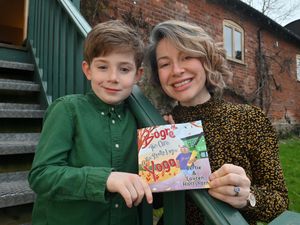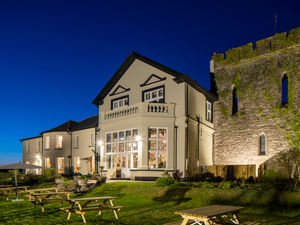Aladdin's Cave of gadgets: Man creates amazing Nixie tube clocks
As a child Paul Parry loved to taking his toys apart to find out how they worked before putting them back together again.
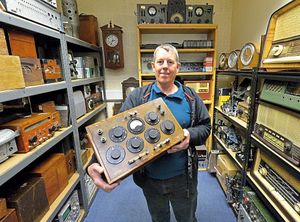
A successful career as an electronics engineer followed but he eventually found he was spending more time at an office desk than he was doing any hands-on work. He longed to return to his passion for tinkering with all kinds of gadgets and electrical equipment.
Then, one day, as a hobby, he began to make a Nixie tube clock inspired by a calculator he remembered from his school days that used the 1950s technology for its display.
Since then he’s made hundreds more, giving everything from old radios, clocks and jewellery boxes to vintage valve testers and aviation parts a new lease of life.
His unique creations are now exported all over the world through his business Bad Dog Designs, which he runs with his wife Karen. “I didn’t set out to be a clockmaker. My last job was systems manager for the M6 Toll but I wasn’t doing anything hands-on, I was just stuck in an office looking at spreadsheets seeing other people go out to do interesting stuff.
“I was the sort of kid that always took their toys apart so my parents stopped buying me toys and for my birthday my dad would take me to the scrapyard and fill the car with old televisions, radios and whatever else we could find.
“One of the items was this massive calculator which has these number tubes that displayed the result and that always stuck with me.
“One day I Googled number tube and it came up with Nixie tube. I found a kit to make a Nixie tube clock and decided to have a go,” says Paul, who lives in Cannock.
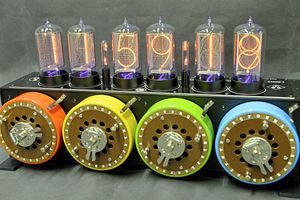
Nixie tubes were used in many electronic products such as petrol pumps, military equipment and early electronic desktop calculators. These glass tubes contain tiny metal numerals that are all stacked together and will emit an orange glow when given an electrical charge.
The were replaced by LEDs and VFDs (vacuum fluorescent displays)in the 1970s but continued to be made in their millions in the former Soviet Union into the late 80s.
“The Nixie tubes only display numbers so there’s not much you can do with them other than make clocks. They can be used to show the time, date and temperature,” says Paul.
After selling his first clock, which he converted from an old Advanced Instrument counter in 2014, he made some more which were also quickly snapped up by enthusiastic buyers. He realised there was a demand for his work and he began letting his creativity flow by making clocks out of wooden boxes with brass decorations.
The 46-year-old began working in his spare room as a hobby doing commissions and selling ready-made clocks but he was eventually able to leave his full-time job to focus on the business.
It’s continued to grow and now he has a dedicated unit at Pillaton Hall Farm in Penkridge which is home to an Aladdin’s Cave full of old and unwanted electrical equipment he has collected to turn into his special timepieces. They range from out-of-date volt meters to typewriters, antique clocks and decorative wooden boxes to more unusual items including a Merlin helicopter rotor blade and a full set of piano keys.
Every item is full of possibility, says Paul, who with the help of Karen, currently makes around 250 Nixie tube clocks a year. “I can look at any item and imagine how it would look as a finished clock already. You can have something that from the outside looks very old but it will have modern electronics, will light up and can be fitted with a bluetooth speaker,” he tells Weekend.

All of the clocks are handmade and no two are ever exactly same but what they do have in common is that they include Nixie tubes powered by modern microprocessor technology.
He has made many clocks in a Steampunk style which have proven popular with fans of this genre but he says his creations tend to appeal to all ages regardless of their interests. “There are generations who have never seen a Nixie tube before so they are fascinated by them and think they are cool.
“Then you’ve got the generations who remember them from when they were young so it’s a blast of nostalgia for them. “Some people like that it’s reusing something that no longer has a purpose to make some new and unique,” explains Paul.
His creations can take anywhere between three weeks and a few months to complete depending on the complexity of the design
But his biggest and most painstaking project was a 5ft tall Nixie tube clock robot named Wilson. It took two years to build and contained six Nixie tubes displaying hours at the top, minutes in the middle, and seconds at the bottom.
Paul used brass pipes to form the basic skeleton and Dekatron tubes for the eyes as these light up and spin. They are also sound sensitive so if someone coughs, Wilson will look at them. He had to make sure that the robot could be easily dismantled and reassembled as he had to be shipped to his new owner in Chicago.
Another unusual commission was a clock based on Alan Turing’s Bombe machine which he used to crack the ‘Enigma’ code used by the German armed forces to send messages securely.
Others include timepieces made from a Sinclair ZX Spectrum, a rocker cover off a Yamaha R1 motorbike and an original dashboard from a Land Rover Defender.
But not all of his projects are clock-based as he was asked to take an original Commodore 64 home computer and convert it into a Steampunk-style laptop.
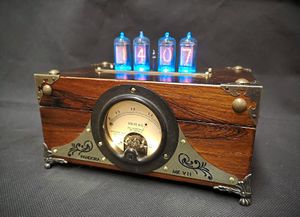
As well as commissions, Paul also sells the parts to enable people to build their own clock and provides tuition.“We had people in their 20s to their late 70s. It gives them a great sense of achievement when they have built their clock,” he explains.
Paul says he enjoys creating pieces that will be treasured for years to come and feels lucky to spend his days doing a job he loves. “Every day is different – you don’t know who is going to call up and what kind of clock they are going to want.
“I’ve made so many different ones but I’ve still got lots of ideas of others I can make,” he adds.
l See www.bad-dog-designs.co.uk

